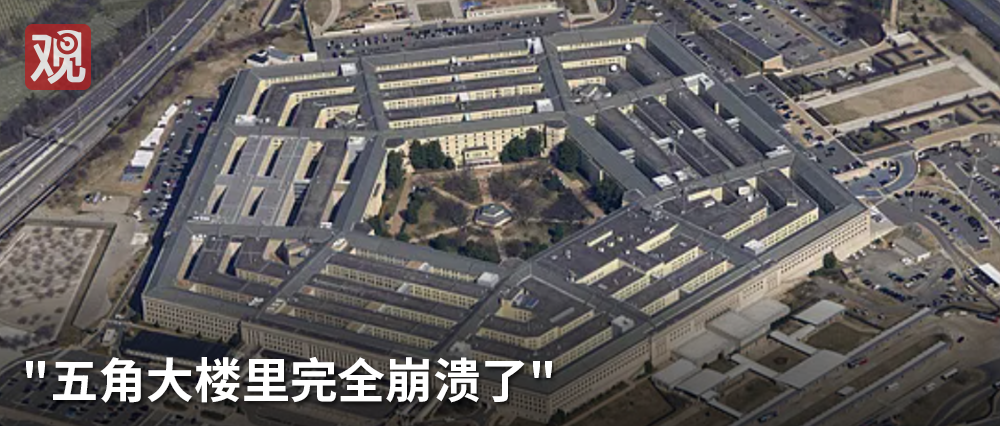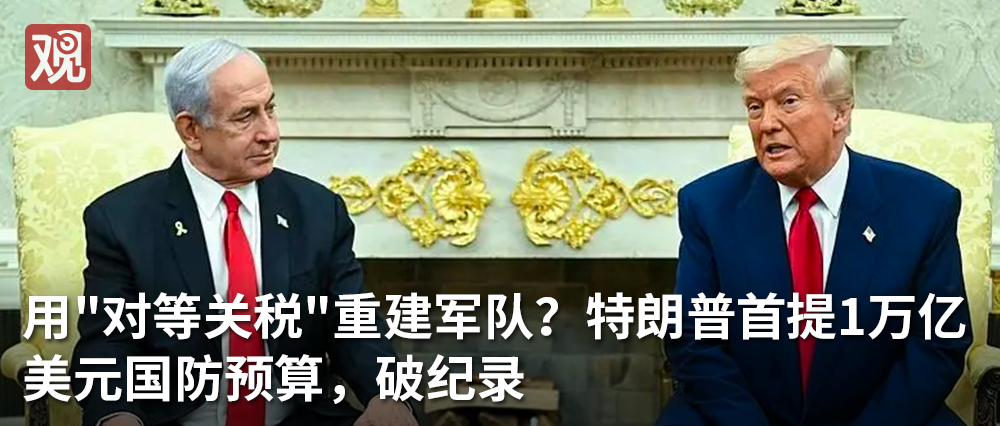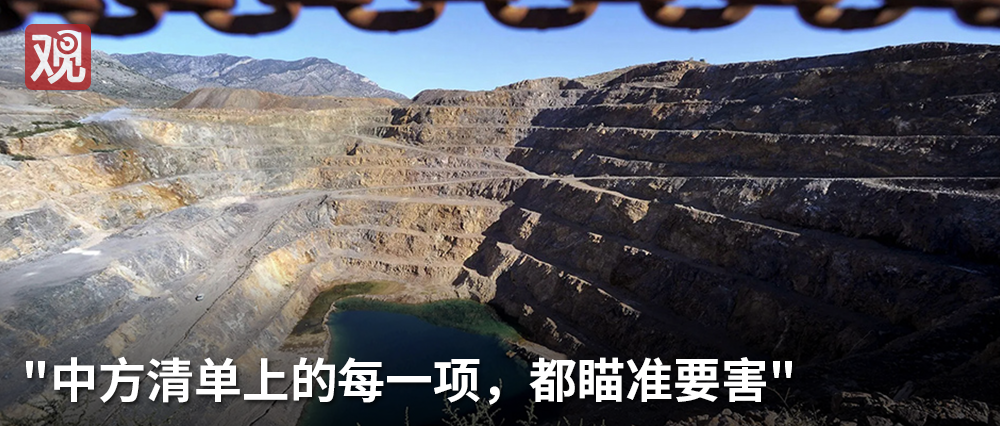 ► Written by Observer Network, Xiong Chaoran
► Written by Observer Network, Xiong Chaoran
“China’s secret weapon in the trade war is an army of factory robots powered by artificial intelligence (AI), which have completely transformed the manufacturing industry.”
On April 23, Keith Bradsher, the Beijing bureau chief of The New York Times, wrote a commentary stating that despite President Trump’s insistence on erecting trade barriers, the export goods that drive the Chinese economy remain competitive in price. Currently, factories across China are rapidly automating, with engineers and electricians beginning to manage batches of robotic production lines, which not only improve product quality but also reduce manufacturing costs.
Today, the level of automation in Chinese factories has surpassed that of the United States, Germany, or Japan. According to the International Federation of Robotics, China has more factory robots per 10,000 manufacturing workers than any other country, except for South Korea or Singapore.
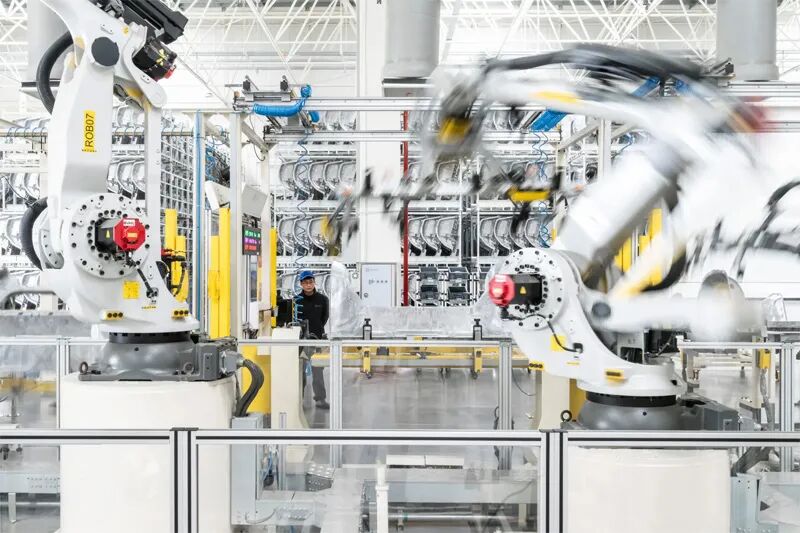
In the body repair shop of the Zeekr factory, robotic arms are busy at work. The New York Times
Since 2002, Bradsher has visited hundreds of factories in China, reporting on related news in cities like Shanghai, Ningbo, and Guangzhou. In his article, he first mentions Yunmu Intelligent Manufacturing, one of China’s largest humanoid robot manufacturers.
He Liang, the founder and CEO of Yunmu Intelligent Manufacturing, stated that China will strive to turn robots into a brand new industry. “The expectation for humanoid robots is to create another electric vehicle industry,” he said, “so from this perspective, it is a national strategy.”
Bradsher found that in many small factories in Chinese cities, or even in places referred to as “roadside workshops,” the use of robots to cut and weld metal for products like ovens and barbecue equipment is very common. In Guangzhou, a businessman named Li is preparing to spend about 300,000 yuan to purchase a robotic arm with a camera from a Chinese company. This device can use AI technology to observe the workers welding the side panels of ovens and then replicate the entire welding process with minimal human intervention.
Just four years ago, the same system could only be purchased from foreign companies at more than three times the current price. “In the past, I never thought about investing in automation,” Mr. Li said. “A human employee can only work 8 hours a day, but machines can work 24 hours.”
The article states that currently, on these automated production lines, Chinese factories still require manual quality inspection and the installation of components that require fine manual work, as some processes cannot yet be completed independently by cameras and computers. For example, before painting, workers still wear white gloves to carefully touch the car body and sand down every tiny flaw. However, with the development of AI technology, some post-production quality inspection processes are gradually becoming automated.
At the end of the assembly line at Geely Auto, 12 high-definition cameras take comprehensive photos of each finished vehicle, and computers compare these images with a vast database of standard assembly data. If any deviations are found, production line personnel are immediately notified, and the entire inspection process takes only a few seconds.
“Now most of my colleagues’ work is just sitting in front of computer monitors (monitoring),” described a Geely employee.
Many Chinese car companies, including Geely, are also using AI technology to enhance the efficiency of car design and function development. In Geely’s new office building in Shanghai, designer Carrie Li is using AI to analyze the joining effects of different interior finishes. “Now I have more free time to open my mind and explore which fashion elements can be integrated into car interiors,” she said.
Bradsher mentioned that American car factories also have examples of automated production, but most of the equipment comes from China. Over the past 20 years, most of the new automobile assembly plants built globally have been concentrated in China, giving rise to a complete automation industry chain.
In addition, Chinese companies have also acquired advanced industrial robot suppliers overseas, such as Germany’s Kuka, and shifted their main operations to China. Last year, the electric vehicle factory opened by Volkswagen in Hefei, Anhui, is a testament to this—out of 1,075 robots in the factory, only one came from Germany, while the other 1,074 were produced in Shanghai.
The article argues that the rapid advancement of automation technology in Chinese factories is driven by top-down policy support, with robots being a key area of development. The latest policy direction includes the government work report from this year’s National People’s Congress, which proposed vigorously developing new generation intelligent terminals such as smart connected new energy vehicles, AI smartphones and computers, intelligent robots, and smart manufacturing equipment.
In recent years, China has not only invested heavily in developing projects but also trains about 350,000 mechanical engineering graduates and other skilled technicians such as electricians and welders each year. In contrast, American universities produce only about 45,000 mechanical engineers annually.
Jonathan Hurst, the chief robotics officer and co-founder of American robotics manufacturer Agility Robotics, admitted that finding technical talent has always been one of the biggest challenges he faces. This expert, who studied at Carnegie Mellon University’s Robotics Institute in Pittsburgh, recalled that in his graduate program, there were only two students in mechanical engineering, and he was one of them.
Recently, as the tariff trade war initiated by Trump escalates, the U.S. side has not only disrupted the global political and economic situation but has also inevitably “shot itself in the foot,” particularly in the field of robotics.
Bloomberg reports that the current uncertainty of tariff policies is making it more challenging for the U.S. to compete for dominance in the robot race with China. The report cites agency findings that most of the key hardware for humanoid robots is currently produced in China; four of the five main suppliers of visual systems are Chinese companies; even leading American robotics companies still need to source some materials from China.
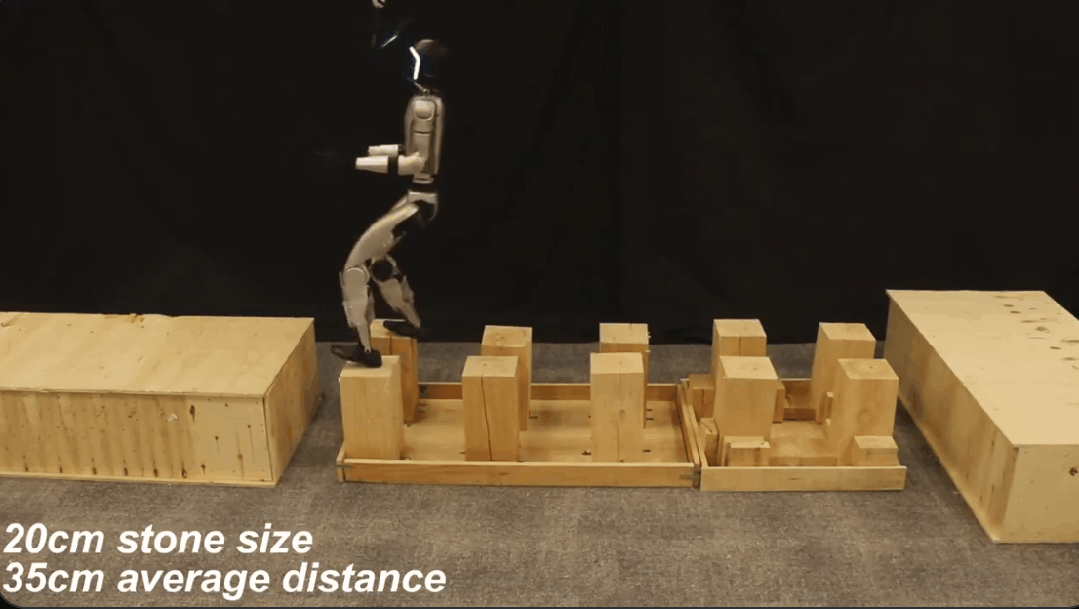 Chinese Yushu robots easily balance on a beam and perform on a flower stand. Video screenshotIndustry organization leaders admit that even if some companies want to relocate manufacturing back to the U.S., there are not even vendors locally selling certain key components; even if there are, the costs are much higher. Under high tariffs, if the prices of components soar, these American robotics companies will also be affected.Bloomberg points out that the development of the American robotics industry benefits not only from the current AI momentum but also from the cost advantages brought by “Made in China,” but Trump has almost overnight changed the situation. In addition to cost, efficiency must also be considered; a CEO of a robotics startup stated that while other countries may fill some supply chain gaps, they lack the efficiency that only China possesses.
Chinese Yushu robots easily balance on a beam and perform on a flower stand. Video screenshotIndustry organization leaders admit that even if some companies want to relocate manufacturing back to the U.S., there are not even vendors locally selling certain key components; even if there are, the costs are much higher. Under high tariffs, if the prices of components soar, these American robotics companies will also be affected.Bloomberg points out that the development of the American robotics industry benefits not only from the current AI momentum but also from the cost advantages brought by “Made in China,” but Trump has almost overnight changed the situation. In addition to cost, efficiency must also be considered; a CEO of a robotics startup stated that while other countries may fill some supply chain gaps, they lack the efficiency that only China possesses.
In early April, after the Trump administration imposed unreasonable so-called “reciprocal tariffs” on China, the Chinese side quickly introduced countermeasures, implementing export controls on seven categories of heavy rare earth-related items, including samarium, gadolinium, terbium, dysprosium, lutetium, scandium, and yttrium, as a precise counterattack.
The latest development is that Elon Musk, who plays a key role in the Trump administration, revealed during Tesla’s first-quarter earnings call on April 22 that the production of the company’s humanoid robot “Optimus” has been affected by China’s restrictions on rare earth magnet exports. Musk stated that the Chinese side wants Tesla to ensure that the rare earth magnets it obtains from China are not used for military purposes.
Bloomberg points out that Tesla, as one of the most notable buyers of rare earth magnets, has clearly indicated the direct impact of this policy change from China.
Chinese Foreign Ministry spokesperson Lin Jian has repeatedly emphasized that this tariff war was initiated by the U.S. side, and that the Chinese side’s necessary countermeasures are to safeguard its legitimate rights and international fairness and justice, which is completely reasonable and legal.
Lin Jian stressed that China’s position has always been clear: there are no winners in a tariff war or trade war. China does not want to fight, but is not afraid to fight. If the U.S. truly wants to resolve the issue through dialogue and negotiation, it should stop the extreme pressure tactics, stop the threats and coercion, and engage in dialogue with China on the basis of equality, respect, and mutual benefit.
Source | Observer Network
Recommended Reading